

| Previous Flies |
| Fly Tying Terms |
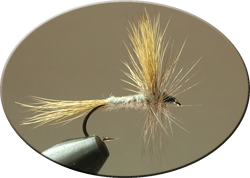
Gray Wulff
The Gray Wulff and the White Wulff were the first patterns developed for what is now known as the Wulff Series of flies. These patterns were innovations of Henry “Lee” Wulff. The Wulff patterns were the first to use hair (specifically bucktail deer hair) for wings and tails. These flies are highly visible and great floaters primarily designed for rough water fishing. The Gray Wulff, created in 1929-1930, was the first fly designed in the Wulff Series.
Materials
Method
Step #1 Tie in a good base of your favorite black, 6/0 thread.
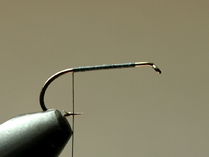
Step #2 Select fibers from your bucktail. I prefer medium brown, but vary
the shade depending on the dark mayflies in your area, that you are tying
to match.
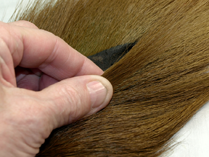
Step #3 Align your hair tips by using a stacker. Now is the time to remove
any unwanted hair fibers.
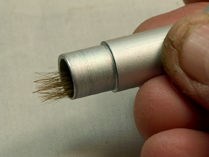
Step #4 Tie in your tail fibers then run your thread forward to the throat
position.
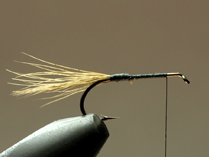
Step #5 Tie in your wing fibers and trim off the unwanted material.
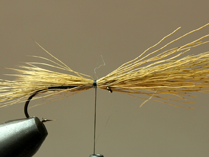
Step #6 Tie in your wing fibers, upright and divided, using the standard figure
eight technique.
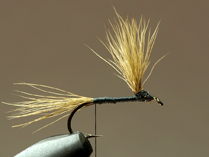
Step #7 Prepare your thread with dubbing wax.
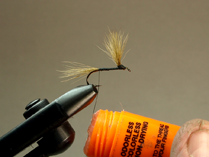
Step #8 Add your dubbing to the thread and wrap the body forward. Muskrat
may be substituted with any gray fur or synthetic if you desire.
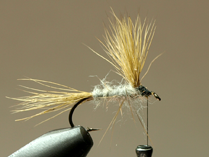
Step #9 If your fly appears to ragged or buggy, trim it up before adding the
hackle.
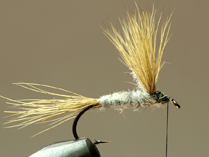
Step #10 Select and gauge a hackle from your neck and prepare it by trimming
off the webbed portion.
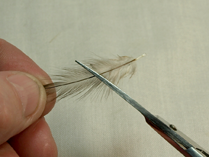
Step #11 Tie in you hackle and wrap in the normal fashion.
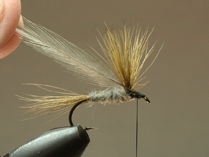
Step #12 Using hackle guards or a piece from a soda straw --- pull the hackle
and wings back out of the way while you tie in the head.
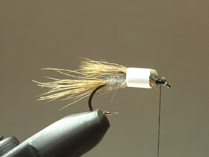
Step #13 Remove the thread and add your head cement.
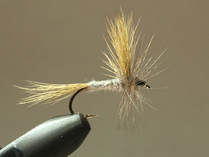
The Gray Wulff was designed to imitate the Isonychia hatches of the Catskills, however it can be used to imitate any dark mayfly that the trout are feeding on. The Gray Wulff is a rough water fly, but try casting it to the surface of a deep pool during the summer, and twitch it just a little. There are many other flies that have been added to the Wulff Series, not all of which were designed by Lee, himself. Common tying variations include the use of brown calf tail or elk hair in place of brown bucktail for the wing and tail.
Historical note: The Royal Wulff is often miscreditted to Lee Wulff. However the actual design of the fly should properly go to Q. L. Quackenbush. “Quack” asked tyer Reuben Cross to modify the Royal Coachman with a stiffer wing design. Reuben substituted Impala tail thus giving birth to what was then called the Quack Coachman. It looked very similar to the Wulff Series flies and eventually became know as the Royal Wulff.
See you on the water…..
Tom Deschaine, Westland, MI
Fly of the week Archives
For more great flies, check out: Beginning Fly Tying, Intermediate Fly Tying and Advanced Fly Tying.
[ HOME ]
[ Search ] [ Contact FAOL ] [ Media Kit ]